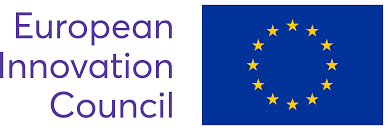EndoPath
Towards an early, objective, and cost-effective diagnostic tool to identify endometriosis at a primary care level.

IdiapJGol is a research centre linked to the Catalan Health Institute, promoting innovation and research in primary care. It specializes in clinical, epidemiological, and health services research, collaborating closely with the Catalan primary care network and other healthcare centres to enhance patient quality of life.
Endometriosis, a prevalent and chronic inflammatory condition affecting 10% of reproductive-age women. Diagnosing endometriosis remains challenging due to its diverse and non-specific symptomatology, together with the absence of sensitive, non-invasive diagnostic methods. There is an average dealy in diagnosis of 6.6 years from initial medical consultations, with delays reaching up to 11 years in some cases.
There is a challenge at the primary care level to identify endometriosis at early stages and ensure patients are placed on the correct diagnostic pathway. In Catalonia, ASSIRs serve as the principal entry point for individuals presenting with symptoms compatible with endometriosis. They face the challenge of ensuring they are neither misdiagnosed nor overlooked, and referred to more specialized centers with the capacity to perform a final diagnosis and provide a treatment plan tailored to each patient.


MiMARK is a women’s found, and women’s led company reshaping gynecological diagnostics, envisioning the gynecological fluid as the next step in liquid biopsy in gynecology.
At MiMARK, we develop non-invasive diagnostic tests to meet unmet clinical needs in gynecology, analyzing biomarkers in gynecological fluid.
Our goal is to develop innovative IVD assays that address the challenges of underdiagnosis and misdiagnosis of gynecological malignancies, as well as reduce the physical and emotional burden associated with gynecological testing.
Our first product, WomEC, is a protein biomarker-based test designed for the diagnosis of endometrial cancer. In addition, we are advancing the development of tests for prognosis and screening in endometrial cancer, as well as for the detection of other gynecological diseases, such as endometriosis.

The solution proposed is a validated set of protein biomarkers present in cervical fluid for the detection of endometriosis at early stages on individuals with symptomatology assessed at primary care. The scope of this pilot study is to assess the diagnostic potential of a panel of biomarkers for the detection of endometriosis. The selected biomarkers will be the basis for the future development of an IVD test based on the qualitative immunoassay to aid in the diagnosis of endometriosis.
The proposed pilot, and the IVD test we aim to develop, have the potential to revolutionize endometriosis diagnosis through its use of cervical fluid-a minimally invasive sample, the exploitation of novel protein biomarkers specific to endometriosis, and a unique positioning within the diagnostic journey—three elements critical to its impact.
Primary care centers in Catalonia lack the specialized tools and standardized protocols needed to effectively diagnose endometriosis in patients presenting nonspecific symptoms, leading to significant diagnostic delays, multiple visits, and misdiagnoses, which take a high physical and psychological toll on patients. Our solution aims to enable primary care centers to identify and refer high-risk endometriosis patients to specialists for definitive diagnosis.
The proposed solution is also designed to be cost-effective and easily implementable at the primary care level. It aligns with the requirements of the Challenger by being non-invasive and easy to integrate into routine consultations at primary care centres, and also gynaecology and fertility clinics. A cytology sample can be taken in any of these settings by personnel without specialized training, positioning the test as a triage or early diagnostic tool. The sample is then sent to a clinical laboratory, requiring no further manipulation by the general practitioner or gynaecologist. This approach helps refer patients suspected of endometriosis or at higher risk to specialists for definitive diagnosis, simplifying and accelerating the diagnostic process, reducing delays, and alleviating the burden on primary care centres.






